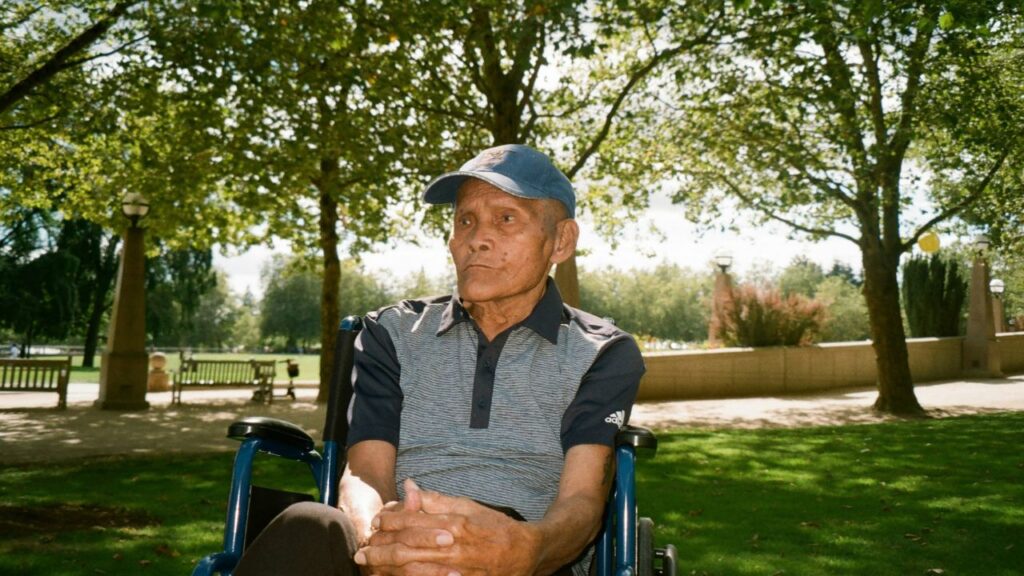While a Registered Retirement Savings Plan (RRSP) is intended to help Canadian residents invest in their future, borrowing funds from your RRSP to finance education is also an investment in your future.
What is the Lifelong Learning Plan (LLP)?
The Lifelong Learning Plan (LLP) provides an opportunity for individuals who want to advance their education but do not have funds other than those inside an RRSP. The LLP provides an interest-free loan from an RRSP for qualifying individuals. It allows an individual to withdraw up to $10,000 a year from his or her RRSP to finance his or her own or a spouse’s or common-law partner’s (the “LLP student”) full-time education or training at a qualifying educational institution. If the LLP student is disabled, he or she may qualify for the LLP, even if attending on a part-time basis. Each individual is limited to a $20,000 withdrawal in total over a four-calendar-year period while enrolled in a qualifying program.
Conditions that Must Be Met Before Withdrawal
Before a withdrawal is made, the LLP student must be a Canadian resident, and
- be enrolled on a full-time basis1 in a qualifying educational program at a designated educational institution
- have received a written offer to enrol (or conditionally enrol) before March of the year following the LLP withdrawal in a qualifying educational program at a designated educational institution
Qualifying Educational Program
A qualifying educational program is an educational program that is at least three consecutive months in length and requires the student to spend at least 10 hours per week on courses or work in the program at a designated educational institution.
Designated educational institution
A designated educational institution is any of the following:
- A university, college or other educational institution in Canada that is designated as a specified educational institution under the Canada Student Loans Act, the Canada Student Financial Assistance Act or under an Act Respecting Financial assistance for Education Expenses (Quebec)
- An educational institution in Canada certified by Employment and Social Development offering courses (other than courses designed for university credit) that provide skills for, or improve a person’s skills in, an occupation
- A university outside of Canada, in which the student is enrolled, providing the course is not less than three consecutive weeks in duration and leads to a degree at the bachelor level or higher
- An educational institution in the United States (U.S.) where the student resides in Canada (near the Canada-U.S. border) but attends (commutes) to a university, college or other educational institution in the U.S. providing courses at a post-secondary school level
Qualifying Student
A qualifying student, for any month in a taxation year after 2016, is an individual enrolled in a qualifying educational program as a full-time student at a designated educational institution.
If requested by the minister, the student must provide proof of enrolment by filing a certificate in prescribed form issued by the designated educational institution containing prescribed information.
Further, if the student is enrolled at an educational institution certified by the Minister of Employment and Social Development, the student must have attained 16 years of age by the end of the year and is enrolled in the program to obtain or improve the individual’s skills in an occupation.
Part-time studies may qualify where the student meets the disability conditions. The student must be enrolled in a qualifying educational program but without the condition that they spend at least 10 hours or more per week on courses or work in the program.
Maximum Withdrawal from an RRSP
You can borrow up to $10,000 a year from an RRSP under the LLP. The maximum total withdrawal is $20,000 over a four-year period. Any withdrawals in excess of the annual $10,000 limit and/or the cumulative $20,000 four-year limit will be included in your income.
Spousal or Common-Law Partner RRSPs
If your spouse or common-law partner contributes to a spousal or common-law partner RRSP under which you are the annuitant during any of the last three years, any qualifying withdrawal made by you under the LLP will not be attributed back to your spouse or common-law partner as would normally be the case. If the money is not used to finance a post-secondary education, amounts not repaid to the RRSP must be reported as income of the spouse or common-law partner who withdrew the money (i.e., the annuitant). When the participant repays the withdrawals from the RRSP, the repayments can be made to any RRSP or pooled registered pension plan (PRPP) under which the participant is the annuitant (RRSP) or member (PRPP).
Group RRSPs
If you contribute to an employer-sponsored group RRSP, you may be penalized for early withdrawals, depending on the terms and conditions of the plan. Ask your employer for more details.
Use of funds
As long as the LLP student is enrolled in a qualifying program at a designated educational institution, the person who made the withdrawal has complete control over the use of the funds. The funds can be used for purposes other than education costs. No proof of expenses is required.
Can You Participate in the LLP More than Once?
Yes. However, all amounts previously received under the LLP must be repaid before the beginning of the year of re-participation. In other words, you cannot repay a balance owing and re-participate by withdrawing again later that year. You must wait until at least the following year.
Disabled Students
If the LLP student has a mental or physical disability, then he or she may attend a designated educational institution on a part-time basis. In order to qualify, the disabled LLP student must either:
- be entitled to the disability tax credit in the same year the LLP withdrawal was made
- have submitted a signed letter from a medical professional (a medical doctor, an optometrist, a speech-language pathologist, an audiologist, an occupational therapist, a physiotherapist, or a psychologist) stating that the student cannot be reasonably be expected to be enrolled as a full-time student because of the mental or physical impairment
What if You make a withdrawal from my RRSP and neither my spouse or common-law partner nor I pursue a qualifying post-secondary education?
If you (the participant) satisfied the criteria to make the LLP withdrawal, but then the student does not meet the conditions of the LLP program, you generally have until December 31 of the year following the year in which you made the withdrawal to return the funds to your RRSP and cancel your participation. If the funds are not returned, the amount withdrawn will become taxable in the year withdrawn.
How do these withdrawals affect new RRSP contributions?
An anti-avoidance rule exists that prevents people from simply contributing to an RRSP for the tax deduction and then cashing it out tax-free as a withdrawal under the LLP. The tax rules state that RRSP contributions made during the 89-day period prior to withdrawal under the LLP may be ineligible to be deducted from income in any year. To determine the amount of non-deductible RRSP contributions, subtract the fair market value of the particular RRSP immediately after the withdrawal under the LLP from all amounts you contributed to that plan during the 89-day period prior to the withdrawal. Note that these rules apply on a plan-by-plan basis. You must look at the fair market value of each RRSP from which you withdrew under the LLP separately to determine if a contribution is deductible.
Repayment under the LLP
Under the LLP, for taxation years prior to 2017, the participant must repay his or her RRSP or PRPP over a 10-year period, beginning the earlier of
- the fifth calendar year after the year of the first withdrawal
- the second consecutive year for which the student cannot claim the education credit for at least three months.
For taxation years after 2016, the participant must repay his or her RRSP or PRPP over a 10-year period, beginning the earlier of
- the fifth calendar year after the year of the first withdrawal
- the second consecutive year for which the student is no longer considered a qualifying student for at least three months
Every year, the participant must repay a portion of the amount borrowed from his or her RRSP, starting with one-tenth of the outstanding balance in the first year. These repayments are not considered RRSP contributions and are not tax-deductible. Repayments do not have to be made to the same RRSP as the withdrawal. Rather, they can be made to any RRSP or PRPP for which the participant is the annuitant (RRSP) or member (PRPP) in the year of repayment or within the first 60 days after that year. A designation of repayment can be made by the participant on Schedule 7 of his or her income tax return for that year. Any amounts not repaid are taken into income for that year.
LLP participants who have an outstanding balance at the end of the year must file a tax return each year until the LLP withdrawals have been fully repaid, even if the participant doesn’t owe tax.
In order to be eligible to make LLP repayments over a 10-year period, the LLP student has to continue to be enrolled at the end of March of the year following the LLP withdrawal, unless the student has already completed the program by then. If the LLP student leaves the program before April of the year following the withdrawal, repayments can still be made over a 10-year period if less than 75% of the student’s tuition is refundable. If 75% or more of the LLP student’s tuition is refundable, the LLP withdrawal must be cancelled.
Every year, the CRA will send the participant an LLP Statement of Account with his or her notice of assessment (reassessment) that will show what has been repaid, the balance remaining to be repaid and the minimum repayment for the next year.
What happens if the participant becomes a non-resident of Canada?
If the participant becomes a non-resident, he or she has 60 days to repay the outstanding balance on his or her LLP, which must be done before the tax return for the final year of residency is filed. Any amount that has not already been repaid or taken into income in an earlier year will be included in the participant’s income for the year when he or she ceased to be a Canadian resident.
What happens in the year the participant turns 71?
If the participant has an outstanding LLP balance in the year after the year the participant turns 71, he or she will not be able to repay any withdrawals into his or her RRSP or PRPP. In the year the participant turns 71, he or she can either:
- repay the remaining balance
- repay a portion of the remaining balance
- not make any repayments into his or her RRSP or PRPP
If the participant chooses the second or third option, the remaining balance will be divided by the number of years left in the repayment schedule. The amount calculated will be included as income for each of the remaining years.
Death of student or participant
If the LLP student dies and the student was not the participant, then the repayment schedule remains 10 years. If the LLP participant dies, then any unpaid balance must be included in his or her income for the year of death. Any RRSP or PRPP contributions made by the deceased can be designated as repayments. However, if at the time of death the participant had a spouse or common-law partner who is a Canadian resident, the spouse or common-law partner can elect, jointly with the deceased’s legal representative, to take over the deceased’s LLP balance.
If the surviving spouse or common-law partner had his or her own outstanding LLP balance, then the deceased’s balance will be added to the surviving spouse’s or common-law partner’s balance, and will have to be repaid based on the surviving spouse’s or common-law partner’s schedule. Otherwise, the surviving spouse or common-law partner will have to make repayments to his or her RRSP over the normal 10 year repayment period, determined as though the year of his or her first LLP withdrawal is the year the person died.
If the surviving spouse or common-law partner elects to make the repayments and the deceased had not made a repayment during the year of death, the CRA will not require a repayment for that year.
To make the election, the surviving spouse or common-law partner and the deceased’s legal representative must jointly sign a letter and attach it to the deceased’s tax return for the year of death. The letter must include:
- a statement that an election is being made to have the surviving spouse or common-law partner take over the unpaid balance of the LLP
- a statement that the income will not be included in the deceased’s return
Conclusion
The LLP allows the participant to borrow money from his or her RRSP. The participant has the option to gradually repay his or her RRSP or PRPP, so the tax deferral associated with his or her prior years’ RRSP contributions is not lost. The LLP also allows the participant to spread the income inclusion over a number of years, instead of at the time of withdrawal. A combination of repayment and income inclusion may also be feasible.
Potential participants should keep in mind that they are losing the tax-deferred growth while the funds are not in the RRSP. If non-registered funds are available, they should generally be considered first unless there are negative tax consequences to doing so. Tax-Free Savings Account (TFSA) is another source of education funding. However, for people who have most of their savings in their RRSPs, the LLP provides them with an opportunity to invest in their future. We strongly recommend you consult your own tax advisor to understand the tax implications for your personal circumstances.




